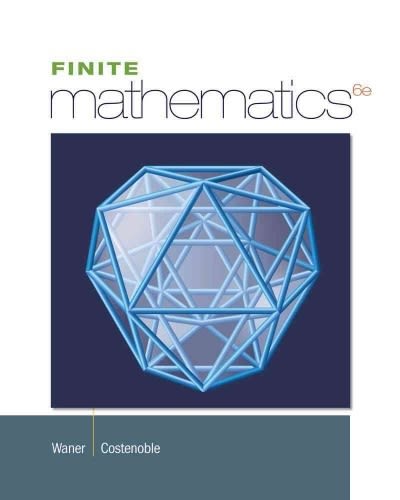Question
A variable of a populace has a mean of =100 and a standard deviation of =42 a. The examining dissemination of the example mean for
A variable of a populace has a mean of =100 and a standard deviation of =42
a. The examining dissemination of the example mean for tests of size 49 is around ordinarily dispersed with mean ____ and standard deviation ____
b. For section (a) to be valid, what supposition did you make about the conveyance of the variable viable?
A. Typical appropriation.
B. No supposition that was made.
C. Uniform dispersion.
c. Is the assertion to a limited extent (a) still evident if the example size is 16 rather than 49? Why or why not?
A. No, the testing circulation of the example mean is never typical for test size under 30.
B. No. Since the conveyance of the variable viable isn't determined, an example size of in any event 30 is required for section (a) to be valid.
C. Indeed, the testing dissemination of the example mean is consistently ordinary.
The time (in minutes) between appearances of clients to a mail center is to be demonstrated by the Exponential dissemination with mean 0.41
Section a)
What is the likelihood that the time between successive clients is under 15 seconds?
Part b)
Discover the likelihood that the time between continuous clients is somewhere in the range of ten and fifteen seconds.
Part c)
Given that the time between successive clients showing up is more prominent than ten seconds, what is the opportunity that it is more noteworthy than fifteen seconds?
There are two indistinguishable boxes. The principal box contains 9 red balls and 1 blue ball. The subsequent box contains 7 red balls and 3 blue balls. The accompanying investigation is performed. At stage 1 one box is picked indiscriminately and two balls are taken from the container without substitution. At stage 2 two balls are looked over the other box with substitution.
|10|
(a) If the principal box is picked at stage 1 process the likelihood that we will see two red balls at stage 1 and two blue balls at stage 2.
(b) Compute the likelihood that we will see two red balls at stage 1 and two blue balls at stage 2.
(c) Find the contingent likelihood that the primary box was picked at stage 1, given that we see two red balls at stage 1 and two blue balls at stage 2
Step by Step Solution
There are 3 Steps involved in it
Step: 1

Get Instant Access to Expert-Tailored Solutions
See step-by-step solutions with expert insights and AI powered tools for academic success
Step: 2

Step: 3

Ace Your Homework with AI
Get the answers you need in no time with our AI-driven, step-by-step assistance
Get Started


